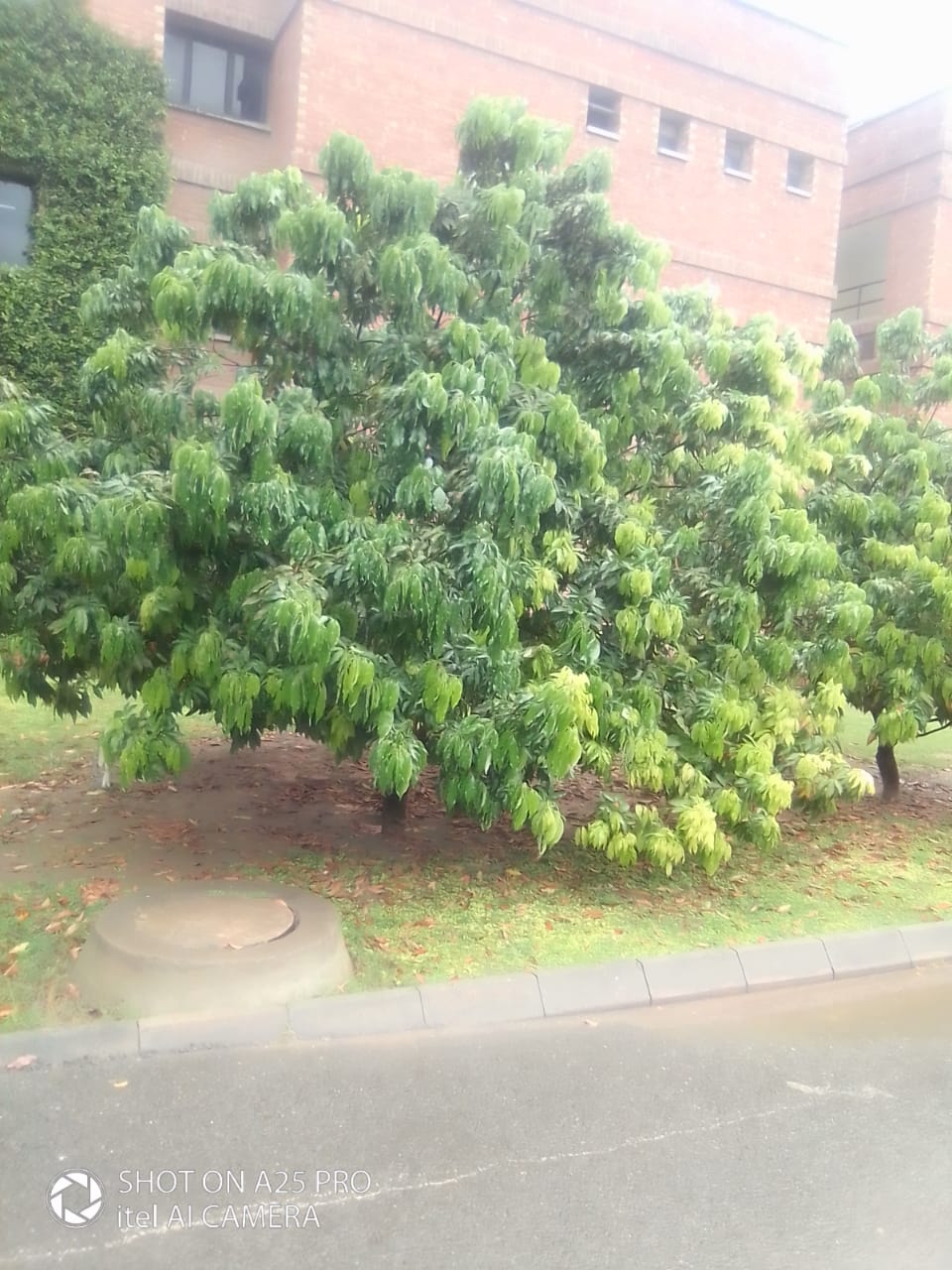Nephelium litchi
Species
Families
Local Names
Genus
Native/Introduced
DNA Barcode
Description
The lychee attracted the attention of European travelers, such as the Spanish bishop, explorer, and sinologist Juan González de Mendoza in his History of the great and mighty kingdom of China (1585; English translation 1588), based on the reports of Spanish friars who had visited China in the 1570s gave the fruit high praise.
They haue a kinde of plummes, that they doo call lechias, that are of an exceeding gallant tast, and neuer hurteth any body, although they shoulde eate a great number of them.
Later the lychee was described and introduced to the West in 1656 by Michal Boym, a Polish Jesuit missionary (at that time Polish–Lithuanian Commonwealth).
Cultivation and uses
Germinating lychee seed with its main root. A normal-sized seed (left) and a small-sized (Chicken tongue) seed (right)
Lychees are extensively grown in southern China, Taiwan, Vietnam and the rest of tropical Southeast Asia, the Indian Subcontinent, and in tropical regions of many other countries. They require a tropical climate that is frost-free and is not below the temperature of −4 °C (25 °F). Lychees require a climate with high summer heat, rainfall, and humidity, growing optimally on well-drained, slightly acidic soils rich in organic matter and mulch.
Some 200 cultivars exist, with early and late maturing forms suited to warmer and cooler climates, respectively, although mainly eight cultivars are used for commerce in China.They are also grown as an ornamental tree, as well as for their fruit. The most common way of propagating lychee is through a method called air layering or marcotting. Air-layers, or marcotts, are made by cutting a branch of a mature tree, covering the cut with a rooting medium, such as peat or sphagnum moss, then wrapping the medium with polyethylene film and allowing the cut to root. Once significant rooting has occurred, the marcott is cut from the branch and potted.
According to folklore, a lychee tree that is not producing much fruit can be girdled, leading to more fruit production. When the central opening of trees is carried out as part of training and pruning, stereo fruiting can be achieved for higher orchard productivity.
Lychees are commonly sold fresh in Asian markets. The red rind turns dark brown when the fruit is refrigerated, but the taste isn't affected. It is also sold canned year-round. The fruit can be dried with the rind intact, at which point the flesh shrinks and darkens.
There are numerous lychee cultivars, with considerable confusion regarding their naming and identification. The same cultivar grown in different climates can produce very different fruit. Cultivars can also have different synonyms in various parts of the world. Southeast Asian countries, along with Australia, use the original Chinese names for the main cultivars. India grows more than a dozen different cultivars. South Africa grows mainly the “Mauritius” cultivar. Most cultivars grown in the United States were imported from China, except for the “Groff”, which was developed in the state of Hawaii.
Different cultivars of lychee are popular in the varying growing regions and countries. In China, popular cultivars include: Sanyuehong, Baitangying, Baila, Shuidong, Feizixiao, Dazou, Heiye, Nuomici, Guiwei, Huaizhi, Lanzhu, and Chenzi. In Vietnam, the most popular cultivar is Vai thieu Hai Duong. In the US, production is based on several cultivars, including Mauritius, Brewster, and Hak Ip. India grows more than a dozen named cultivars, including Shahi (Highest Pulp %), Dehradun, Early Large Red, Kalkattia and Rose Scented.
Phytochemicals
Lychees have moderate amounts of polyphenols, including flavan-3-ol monomers and dimers as major compounds representing about 87% of total polyphenols, which declined in content during storage or browning. Lychees naturally produce butylated hydroxytoluene (BHT).[24] Cyanidin-3-glucoside represented 92% of total anthocyanins.
Poisoning
In 1962, it was found that lychee seeds contained methylenecyclopropylglycine (MCPG), a homologue of hypoglycin A, which caused hypoglycemia in animal studies. Since the end of the 1990s, unexplained outbreaks of encephalopathy occurred, appearing to affect only children in India (where it is called chamki bukhar), and northern Vietnam (where it was called Ac Mong encephalitis after the Vietnamese word for nightmare) during the lychee harvest season from May to June.
A 2013 investigation by the U.S. Centers for Disease Control and Prevention (CDC), in India, showed that cases were linked to the consumption of lychee fruit,[30] causing a noninflammatory encephalopathy that mimicked symptoms of Jamaican vomiting sickness.[31] Because low blood sugar (hypoglycemia) of less than 70 mg/dL in the undernourished children on admission was common, and associated with a poorer outcome (44% of all cases were fatal) the CDC identified the illness as a hypoglycemic encephalopathy.
The investigation linked the illness to hypoglycin A and MCPG toxicity, and to malnourished children eating lychees (particularly unripe ones) on an empty stomach.
The CDC report recommended that parents ensure their children limit lychee consumption and have an evening meal, elevating blood glucose levels that may be sufficient to deter illness.
Earlier studies had incorrectly concluded that transmission may occur from direct contact with lychees contaminated by bat saliva, urine, or guano or with other vectors, such as insects found in lychee trees or sand flies, as in the case of Chandipura virus. A 2017 study found that pesticides used in the plantations could be responsible for the encephalitis and deaths of young children in Bangladesh.









































































































































